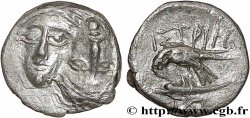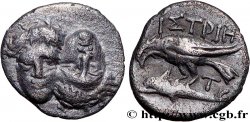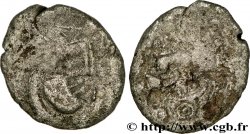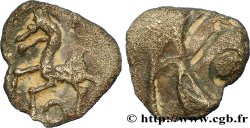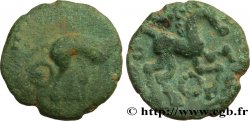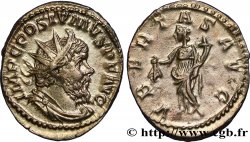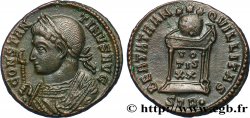v51_0057 - TRACIA - ISTROS Drachme
MONNAIES 51 (2011)
Prezzo di inizio : 420.00 €
Valutazione : 750.00 €
Prezzo realizzato : 613.00 €
Numero di offerte : 4
Offerta maxima : 750.00 €
Prezzo di inizio : 420.00 €
Valutazione : 750.00 €
Prezzo realizzato : 613.00 €
Numero di offerte : 4
Offerta maxima : 750.00 €
Tipo : Drachme
Data: c. 400-350 AC.
Nome della officina / città: Thrace, Istros
Metallo : argento
Diametro : 17 mm
Asse di coniazione : 4 h.
Peso : 5,82 g.
Grado di rarità : R2
Commenti sullo stato di conservazione:
Exemplaire sur un petit flan ovale, parfaitement centré des deux côtés. Très beaux bustes juvéniles des deux têtes masculines. Revers de haut relief, bien venu à la frappe avec les plumes de l’aigle bien visibles. Très jolie patine de collection ancienne avec des reflets mordorés
N° nelle opere di riferimento :
Pedigree :
Cet exemplaire provient de la vente V. Gadoury, J.-C. Baudey, M. Pesce, R. Barthold, A. Poinsignon, des 11-13 octobre 1981, n° 65
Diritto
Titolatura diritto : ANÉPIGRAPHE.
Descrittivo diritto : Deux têtes masculines et imberbes opposées.
Rovescio
Descrittivo rovescio : Aigle volant à gauche attaquant un dauphin.
Legenda rovescio : [I]STRIH/ (AUR)/ D
Traduzione rovescio : (Ister).
Commento
Style des bustes opposés très particulier sur cet exemplaire, très grec comme sur les exemplaires de la collection Stancomb (WSC. 144-146). Mêmes coins que l’exemplaire de la collection William Stancomb (WSC., n° 146, pl. 7) avec un petite bavure de métal sur la bouche de l’un des deux personnages (celui de gauche, la lèvre supérieure droite.
Very particular style of the opposing busts on this example, very Greek as on the examples in the Stancomb collection (WSC. 144-146). Same corners as the example in the William Stancomb collection (WSC., no. 146, pl. 7) with a small metal burr on the mouth of one of the two figures (the one on the left, the upper lip right
Very particular style of the opposing busts on this example, very Greek as on the examples in the Stancomb collection (WSC. 144-146). Same corners as the example in the William Stancomb collection (WSC., no. 146, pl. 7) with a small metal burr on the mouth of one of the two figures (the one on the left, the upper lip right







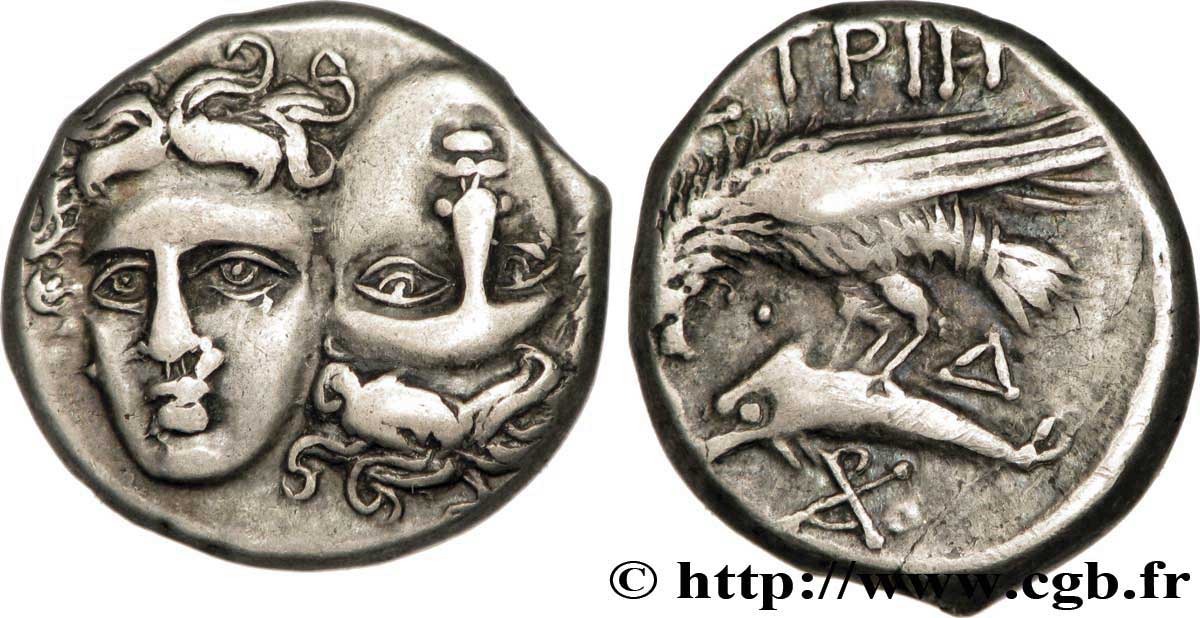
 Segnalare un errore
Segnalare un errore Stampate la pagina
Stampate la pagina Condividi mia selezione
Condividi mia selezione Fai una domanda
Fai una domanda Consegnare / vendere
Consegnare / vendere
 Descrittivo
Descrittivo

